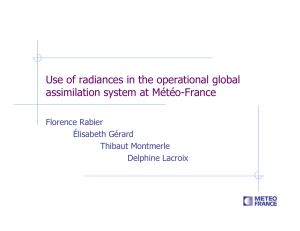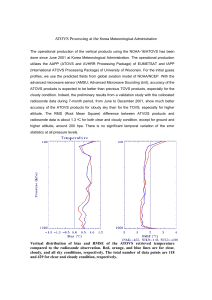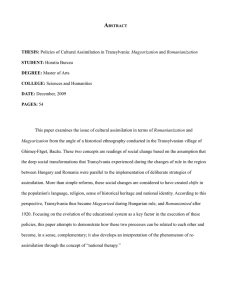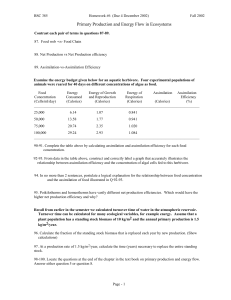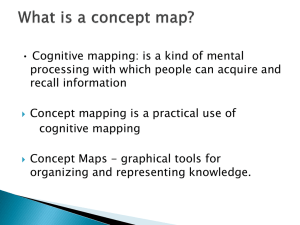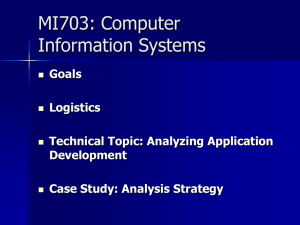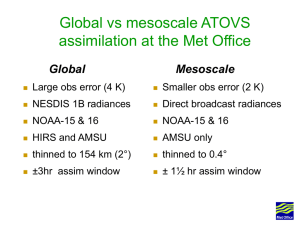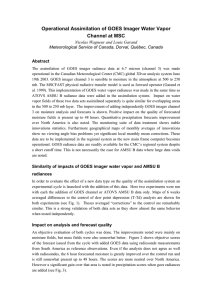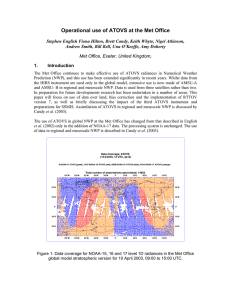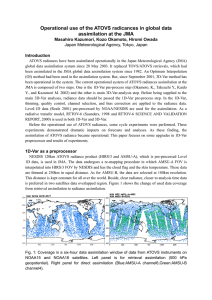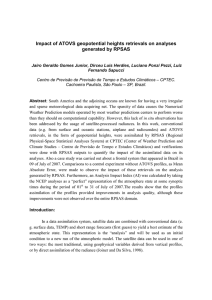Operational Assimilation of GOES Water Vapor Imager Channel at MSC Introduction:
advertisement
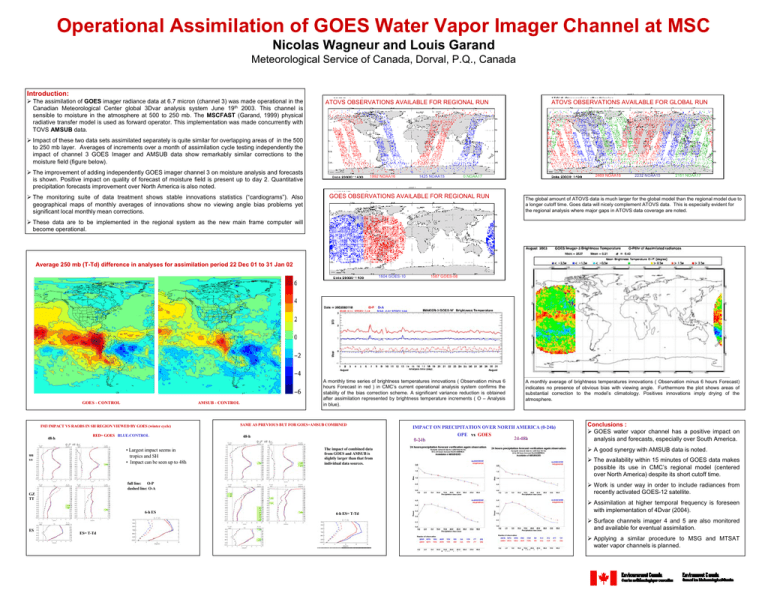
Operational Assimilation of GOES Water Vapor Imager Channel at MSC Nicolas Wagneur and Louis Garand Meteorological Service of Canada, Dorval, P.Q., Canada Introduction: ¾ The assimilation of GOES imager radiance data at 6.7 micron (channel 3) was made operational in the Canadian Meteorological Center global 3Dvar analysis system June 19th 2003. This channel is sensible to moisture in the atmosphere at 500 to 250 mb. The MSCFAST (Garand, 1999) physical radiative transfer model is used as forward operator. This implementation was made concurrently with TOVS AMSUB data. ATOVS OBSERVATIONS AVAILABLE FOR REGIONAL RUN ATOVS OBSERVATIONS AVAILABLE FOR GLOBAL RUN ¾ Impact of these two data sets assimilated separately is quite similar for overlapping areas of in the 500 to 250 mb layer. Averages of increments over a month of assimilation cycle testing independently the impact of channel 3 GOES Imager and AMSUB data show remarkably similar corrections to the moisture field (figure below). ¾ The improvement of adding independently GOES imager channel 3 on moisture analysis and forecasts is shown. Positive impact on quality of forecast of moisture field is present up to day 2. Quantitative precipitation forecasts improvement over North America is also noted. ¾ The monitoring suite of data treatment shows stable innovations statistics (“cardiograms”). Also geographical maps of monthly averages of innovations show no viewing angle bias problems yet significant local monthly mean corrections. 1992 NOAA16 1425 NOAA15 2469 NOAA16 0 NOAA17 GOES OBSERVATIONS AVAILABLE FOR REGIONAL RUN 2232 NOAA15 2181 NOAA17 The global amount of ATOVS data is much larger for the global model than the regional model due to a longer cutoff time. Goes data will nicely complement ATOVS data. This is especially evident for the regional analysis where major gaps in ATOVS data coverage are noted. ¾ These data are to be implemented in the regional system as the new main frame computer will become operational. Average 250 mb (T-Td) difference in analyses for assimilation period 22 Dec 01 to 31 Jan 02 1604 GOES-10 IM3 IMPACT VS RAOBS IN SH REGION VIEWED BY GOES (winter cycle) 48-h RED= GOES BLUE:CONTROL • Largest impact seems in tropics and SH • Impact can be seen up to 48h uu vv A monthly time series of brightness temperatures innovations ( Observation minus 6 hours Forecast in red ) in CMC’s current operational analysis system confirms the stability of the bias correction scheme. A significant variance reduction is obtained after assimilation represented by brightness temperature increments ( O – Analysis in blue). AMSUB - CONTROL GOES - CONTROL SAME AS PREVIOUS BUT FOR GOES+AMSUB COMBINED 48-h The impact of combined data from GOES and AMSUB is slightly larger than that from individual data sources. ES A monthly average of brightness temperatures innovations ( Observation minus 6 hours Forecast) indicates no presence of obvious bias with viewing angle. Furthermore the plot shows areas of substantial correction to the model’s climatology. Positives innovations imply drying of the atmosphere. IMPACT ON PRECIPITATION OVER NORTH AMERICA (0-24h) OPE vs GOES 24-48h 0-24h Conclusions : ¾ GOES water vapor channel has a positive impact on analysis and forecasts, especially over South America. ¾ A good synergy with AMSUB data is noted. ¾ The availability within 15 minutes of GOES data makes possible its use in CMC’s regional model (centered over North America) despite its short cutoff time. ¾ Work is under way in order to include radiances from recently activated GOES-12 satellite. full line: O-P dashed line: O-A GZ TT 6-h ES 1587 GOES-08 6-h ES= T-Td ¾ Assimilation at higher temporal frequency is foreseen with implementation of 4Dvar (2004). ¾ Surface channels imager 4 and 5 are also monitored and available for eventual assimilation. ES= T-Td ¾ Applying a similar procedure to MSG and MTSAT water vapor channels is planned. ATOVS available for Reg ATOVS available for Glob GOES available for Reg Global System • Now: - Uniform resolution of 100 km (400 X 200 X 28) - 3D-Var at T108 on model levels, 6-hr cycle, use of raw radiances from AMSUA, AMSUB and GOES • 2004: - Resolution to 35 km (800 X 600 X 80) - Top at 0.1 hPa (instead of 10 hPa) with additional AMSUA and AMSUB channels - 4D-Var assimilation, 6-hr time window with 3 outer loops at full model resolution and inner loops at T108 (cpu equivalent of a 5-day forecast of full resolution model) - new datasets: profilers, MODIS winds, QuikScat, GOES-12 • 2005: - assimilation of AIRS, MSG, MTSAT - revised 4D-Var statistics • 2006-07: - Additional datasets: IASI, GIFTS, COSMIC… - very large increase in volume of assimilated data
